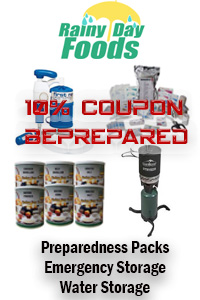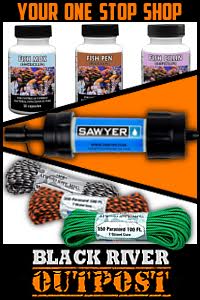
When was the last time you conducted an inventory of all your preps, or all of the items in your home for that matter? Do you have this information in hard copy format as well as stored electronically? It can be a somewhat of a hassle, but conducting bi-annual inventories can have several benefits. First and most important, by conducting inventories you stay familiar with what you have on hand. You know where certain items are stored, where you could stand some improvement and what the shelf life is of those items. If it’s time to rotate something out (FIFO) you’ll be aware, or if something has gone past the expiration date you can flag that on your inventory sheet and make a note that it needs replacing. Inventories also enable you to maintain a running record which can be updated as new supplies are acquired or consumed. This record can be used as an instant reference if you need to gauge how many months or years of survival you have achieved, or be used as a document of record if your home burns to the ground and everything inside of it is consumed by the flames. What follows are some tips to consider when conducting your inventories.
1- Set aside adequate time to do this, you should not rush and attempt to do this on a week night 30 minutes before bedtime. Be meticulous in your inspections and record keeping.
2- Use this time to organize your preps. If they are piled in a corner in the back of your basement and scattered throughout the closets of your home it might be a good time to consolidate and reorganize your supplies.
3- Don’t go it alone, have a partner who can assist you while conducting inventories. One person can hold the clipboard or laptop while the other person reads off information. Switch positions to keep each other fresh.
4- Lest we forget about calorie count. Instead of “6 jars of peanut butter” try doing it this way: “6 jars of peanut butter, XX calories per jar, expiration date is March 2014.”
5- In addition to organizing take time to clean your storage space. Pull items from shelves and clean out cobwebs, make sure food storage containers do not show signs of being nibbled on by critters. Wipe down weapons with a soft oily rag before putting them back in the safe.
6- Empty your bags. That’s right, go through your medical kit and inventory everything inside of it. The same applies for your bugout bag(s) and field kit. If you are going to do this make sure to do it thoroughly.
7- Remember to prioritize your supplies. Your bugout gear shouldn’t be on the bottom shelf behind your Christmas ornaments. Try to organize your supplies so that you will have access to the items you might have to use first, versus items you might need in a long term SHTF event.
8- Do the entire home. While you are at it I suggest conducting an inventory of your entire home. This is great to have in case your home is a total loss in a disaster or you are a victim of theft. Sure you have a homeowners policy but it’s still nice to have a personal record of everything of value in your home.
9- Rule of three for inventories: hard copy, electronic copy, video. You could use paper, pencil and a clip board but if you want to make it easier on yourself use a laptop and just print out the spreadsheet once complete. I also recommend taking a video of everything, a method that my insurance agent told me would be acceptable to prove ownership of certain items. Store a backup of all of this information on a thumb drive with your bugout gear.
10- Once you are finished sit back and admire your hard work! There is a great feeling of satisfaction that can be obtained once inventories are conducted. You’ll know exactly where you stand with your prep strategy and what areas you need to improve upon.









Recent Comments